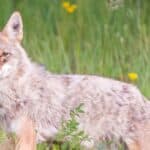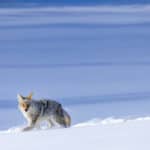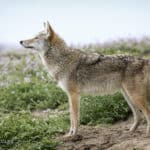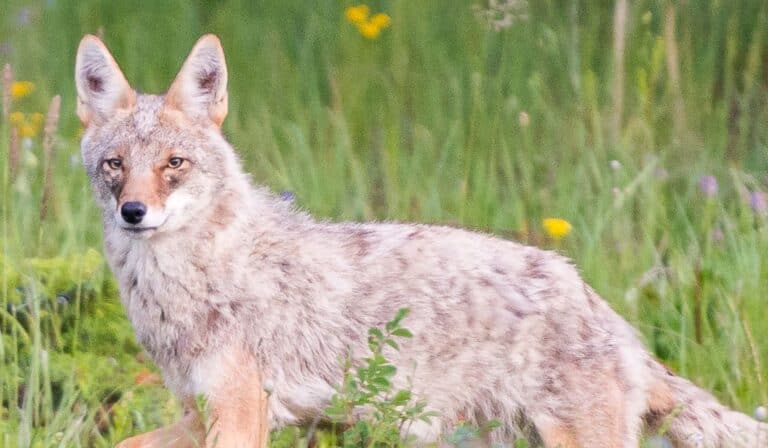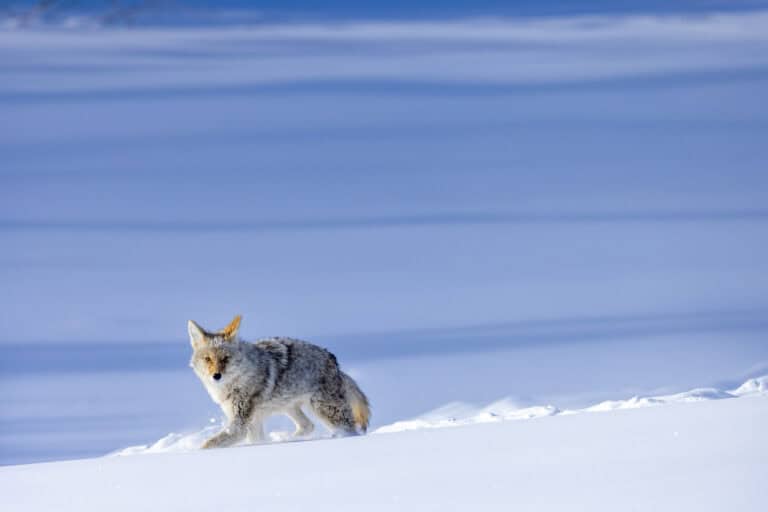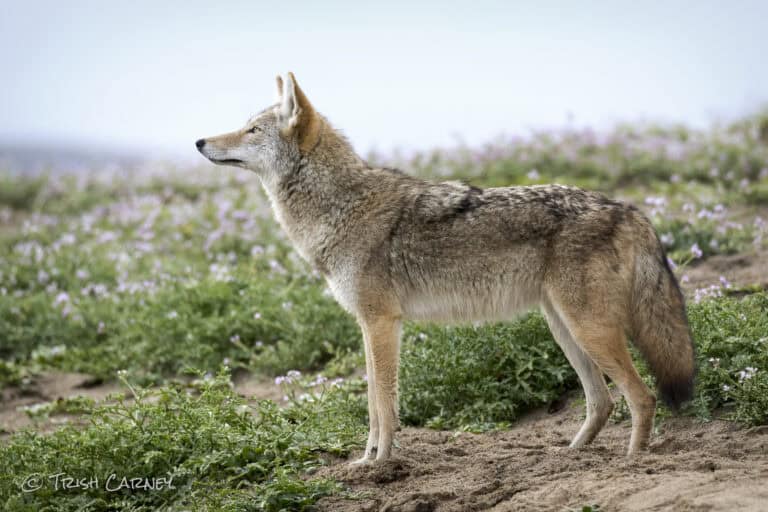The killing of 11 coyotes in Bakersfield during a weekend hunting contest has infuriated conservationists who are trying to ban animal killing competitions that they say needlessly harm important predator populations in California, including, potentially, migrating gray wolves.
The coyotes were shot Sunday during a killing “derby” held in remote areas around Bakersfield, according to Camilla Fox, the executive director for Project Coyote, a nonprofit conservation group. She said another contest, in which hunters receive as much as $300 for killing the most coyotes, is scheduled in the same area on Sunday.
“Most people are shocked to learn that it is legal to kill coyotes, foxes, bobcats, and other wildlife as part of a contest or tournament for prizes and recreational fun,” Fox said. “They’re even more shocked to learn that hundreds of such contests take place each year in the U.S., killing thousands of wild animals.”
Project Coyote is one of several organizations urging the California Fish and Game Commission to ban wildlife-killing contests in California. The commission is scheduled to vote Dec. 3 on a petition that would make it illegal to offer a prize, inducement or reward for killing predators.
The campaign began after conservationists got wind of a three-day Coyote Drive held each February in the woodlands around the rural town of Adin (Modoc County), in the far northeastern corner of California. Another impetus was the wounding of game warden Bob Pera, who was mistakenly shot by an El Dorado County coyote and fox hunter on Valentine’s Day.
Ranchers say they need to manage coyotes because the wily canines are responsible for the vast majority of livestock deaths.
Inadvertent targets
One problem, according to conservationists, is that wolves often get killed in coyote-shooting contests held in other states. That could be a serious problem if the pair of wolves and their pups currently living across the Oregon border migrate to California, according to wildlife biologists.
This week, the Center for Biological Diversity identified 359,000 square miles of habitat that gray wolves could move into in 19 of the lower 48 states, including huge sections of Northern California. Unfortunately, the report states, many wolves that have attempted to establish territory have been shot to death. More than 2,800 wolves have been killed in the northern Rockies, resulting in a 9 percent population decline, since federal protections were lifted there in 2011, according to the Center for Biological Diversity. Minnesota has seen a 25 percent decline in its wolf population.
Contests called unhelpful
The California Fish and Game Commission voted in June to list gray wolves under the California Endangered Species Act. The federal government, however, is being pressured to strip Endangered Species Act protection from gray wolves throughout their range, a decision expected by the end of the year.
Meanwhile, a gray wolf was spotted on the north rim of the Grand Canyon, the first time the species has been seen in that region in half a century.
Regardless of the impact on wolves and other predators, wildlife conservationists argue that predator killing contests, particularly coyote roundups, are counterproductive. Studies have shown that coyotes breed more often and have more pups when pack leaders are killed. That’s because the leaders, or alphas, in a coyote pack are the only animals that mate. When the alpha is killed, previously celibate underlings then mate.
There are as many as 700,000 coyotes in the state, according to the California Cattlemen’s Association, citing Fish and Wildlife estimates. Mountain lions are similarly abundant, the group argues, and both cougars and coyotes kill livestock, which are commodities that contribute to the state and local economy.
Hunting and fishing tags and license fees contribute between $80million to $100 million a year to the Department of Fish and Wildlife, roughly a quarter of the annual budget, according to hunting groups.
Peter Fimrite is a San Francisco Chronicle staff writer. E-mail: pfimrite@sfchronicle.com Twitter: @pfimrite

